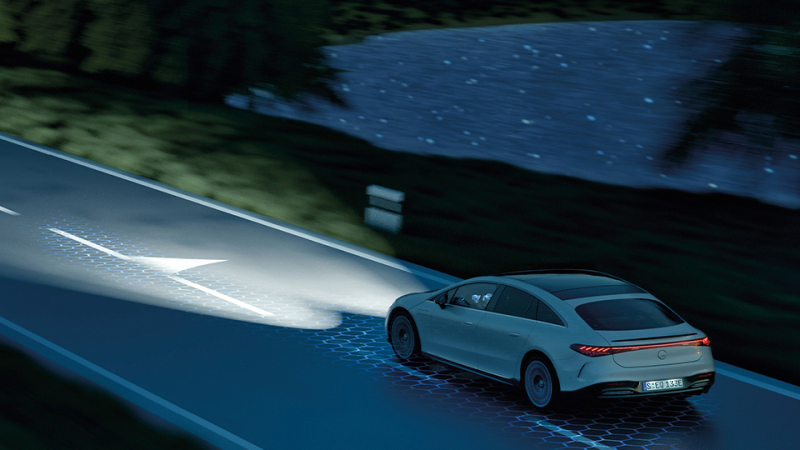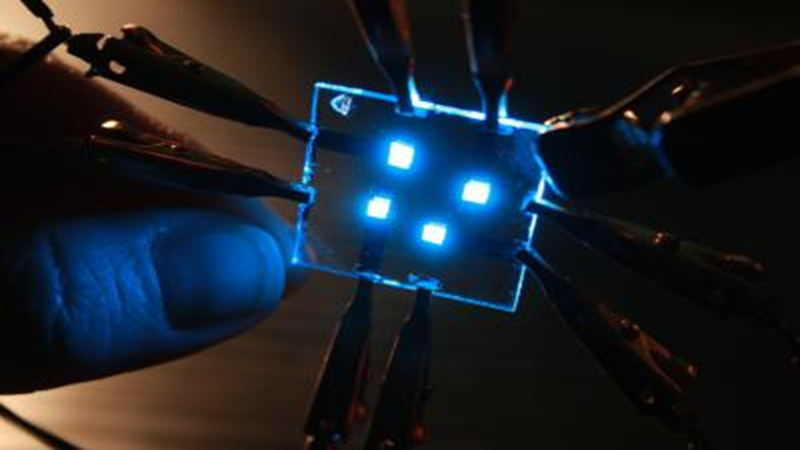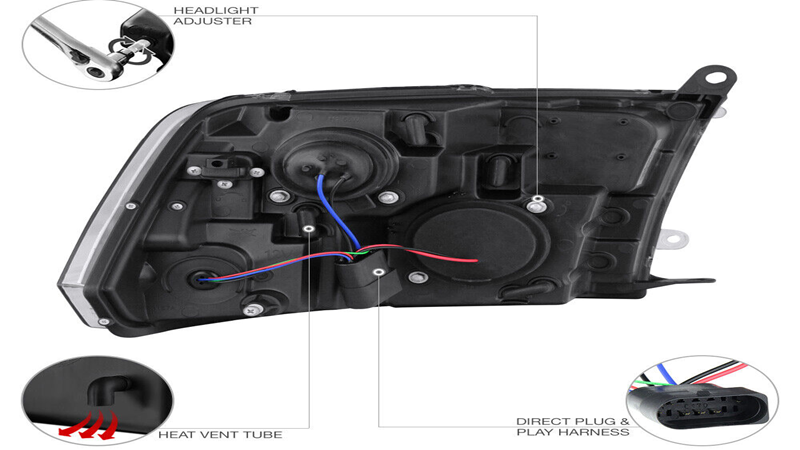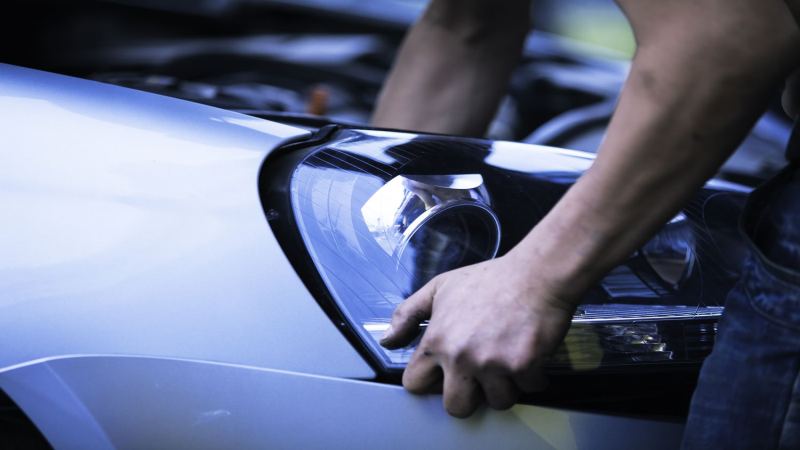The automotive industry constantly revolutionized ways to improve aesthetics and safety. One of the emerging technologies to transform headlights is OLED (organic light-emitting diodes).
These lights offer many technological advancements and benefits that make them superior to the older headlight technologies.
Here, in this blog, we will explore OLED technology, its advantages, its comparison with other headlights, and ways to select the right kind of OLED light. So, buckle up to discover how OLED lights are shaping the future of automotive illumination.
What is OLED Technology?

Organic light-emitting diode lights (OLED) are a new innovative technology that utilizes organic materials (carbon-based materials) for the production of lights. The old traditional LEDs (light-emitting diodes) utilize both organic and inorganic materials, but their technology and operations are different.
Technical Aspects of OLED
The OLED technology produces very thin OLED lighting panels, light fixtures, and lightweight lights. Although they need a heat sink, they don’t start heating up like several other types of lights with proper thermal management.
In addition, the light panel acts as a light fixture when you connect OLED panels to a driver (a device that controls light).
A phenomenon known as electroluminescence is responsible for the light emission in OLED. In these lights, the internal layer of organic matter sandwiches a cathode and an anode.
The layer with organic material gets excited and starts emitting light when the electric current passes through it.
OLEDs also emit unique light patterns, including amber, which has a less blue effect, and thus, they are perfect for nighttime.
Amber light is famous for its benefits in healthcare like improving sleep and reducing stress and anxiety. OLED is the safest light because the light emitted from it does not harm our eyes and skin.
OLED Technology in Automotive Headlights

OLED lighting technology is a safer option in automotive lighting than traditional LED lighting technology due to its brightness, visibility, and reliability. LED lights are point light sources and generate heat, which is then absorbed by the heat sink.
OLED lighting solutions bring a revolution as they are flat and thinner light sources, reduce power consumption, and do not require reflectors.
There are several applications of OLED light in automotive lighting:
- OLED lights reign supreme in producing straight, large-area light sources. There are applications in the exterior panel of a car, such as a rear display, to hint about the driver’s next step.
- These are also used in signal lights, indicators, or flashing lights as well.
- OLEDs increase the overall look of the interior of the car. They create a sense of luxury when used for dashboards, door panels, and footwells.
- They have the feature to emit better, e.g., tail lamp lights.
Advantages of OLED Lighting in Automotive
In the automotive industry and lighting market, OLED (Organic Light-Emitting Diode) technology is trending as a game-changer and offers various advantages over traditional halogen and LED technology. The following are the key benefits of these lights in automobiles:
1. Enhanced Visual Clarity

OLED headlights can copy natural daylight thus improving visibility for drivers. They produce a broader color spectrum and that’s why emit light just like natural daylight resulting in reducing the eye strain for drivers.
This lighting is well known for its uniform lighting distribution and for providing clearer illumination.
2. Design Flexibility
This technology consists of incredibly thin and flexible light sources. The overall lighting of the car is customizable using this lighting including headlights, tail lights, backlights, and every interior lighting.
It can control the individual segment within an OLED panel for dynamic lighting effects. The thin appearance of OLEDs allows for their fixture on several surfaces within the car and the reduction of bulky lighting fixtures.
3. Energy Efficiency

OLEDs are more efficient than traditional halogen bulbs resulting in lesser fuel and power consumption and extended battery life of electric cars. It allows targeted lighting due to its precise control. OLED lights are environment-friendly, unlike traditional light sources.
4. Durability and Longevity

OLEDs are solid-state lighting with more durability and a longer lifespan. They generate less heat in contrast to halogen lights.
Further improvements in OLED technology led to improved thermal management and hence enhanced the reliability and durability of lighting.
Comparing OLED to Other Headlight Technologies

Automotive headlights have undergone remarkable changes, developing from early gas lamps to innovative lighting today.
This study compares four prominent lighting technologies: high-intensity discharge (HID), light-emitting diode (LED), halogen, and the trending organic light-emitting diode (OLED).
| Feature | HID (Xenon) | LED | Halogen | OLED |
|---|
OLED lighting and OLED displays have the same light emission process. A major difference is that an OLED display is a pixelated display for visuals that relies on different color pixel sets, each emitting a primary color of blue, green, and red.
The arrangement of pixels is in a matrix form consisting of a driving transistor used to drive the pixel to display an image of full color.
An OLED lighting panel is a single emissive surface producing even white light and is mostly aimed for illumination purposes. Here, take a brief look at the comparison of these lighting technologies with OLED lighting technology.
OLED VS. HID

HID and OLED both hold a spot in the future of automotive headlights. However, they have many differences:
- HIDs produce cool, white light directly, whereas OLEDs are a great choice. They are similar to daylight with a broader color spectrum.
- Regarding energy efficiency, HIDs are moderately efficient, but OLEDs are highly energy efficient.
- HID has a limited bulb-like shape. However, OLED is a flexible panel and holds aerodynamic headlight designs.
- Currently, OLED bulbs are the most expensive. HID is more expensive than halogen bulbs but less expensive than OLEDs.
- HID is a developed lighting used in high-end vehicles. In contrast, OLED is currently emerging light and is not widely available.
OLED VS. Halogen

OLEDs and Halogen lighting vary in different properties, some of which are:
- OLEDs emit natural light, whereas halogen is a traditional yellowish light with low visibility.
- Halogen has a lower efficiency of energy with 40-100 watts in a standard bulb than individual OLEDs which are highly energy-efficient.
- OLED lighting is thin and flexible, but halogen limits the shape of the bulb.
- Halogens are a cost-effective option for basic light; however, OLED lights are very expensive.
- Halogens have a limited lifespan due to their fragile filaments, whereas OLED lighting is continually improving in terms of durability.
OLED VS. LED

LED lighting and OLED are both innovative in-car lighting technologies. LED headlights are well-suited for cooler temperatures. However, they serve differently according to their needs. Let’s take a look at their comparison:
- LEDs are point light sources chosen as reading lights because of their brightness, but OLEDs are surface light-emitting sources.
- LED lighting is a light with high-intensity illumination, whereas OLED is a natural and soft surface light source.
- OLED light is thin, flexible, and customizable, whereas LED light offers limited size and placement.
- OLED and LED lighting are both energy-efficient. However, LED technology is leading in terms of energy efficiency.
- OLED is a more expensive light than LED, which is affordable and thus in demand by most people.
Current Market and Future Trends
Here is a complete overview of the current market of OLED headlights and the future trends that can fuel their usage with technological improvements.
Glimpse of the Current Market
OLED lighting technology is emerging as the new contender in automotive lighting. Although it’s not widely adopted today, it holds greater potential in the future of automotive headlights.

Currently, OLED technology is the choice of high-end manufacturers, mainly in concept car designs. The main reason behind its limited application is its high cost.
In addition, more advancements are in progress to improve the thermal management system of OLEDs to ensure their long-lasting function in headlights. OLED lighting is flexible and durable, but further research and testing can make it more advanced.
LED headlights are in high demand today because of their low cost, soft white color, and customizable design. In addition, LEDs resemble a lot with OLED lighting in terms of energy efficiency.
OLED lighting is the future of the automotive headlight industry. For now, it offers excellent visuals and customized designs.
However, with OLEDs, we could see more innovations,e.g., thinner displays, low-cost, and hybrid OLEDs. OLED headlights have the potential for next-generation car design or in many future applications.
Future Trends
Different researchers and automotive manufacturers are working on the betterment and advancement of OLED lights for the future. However, the future of OLEDs seems to be very marvelous.
After the maturity and advancement of OLEDs in the future, their cost may decrease as well. A lot of research on the development of improved versions of OLEDs is on the way to ensure their operation under harsh weather conditions.
Several expected innovations in OLEDs for better light quality, customization, and personalization in the future. Whereas, expectations of more advancement for heat dissipation systems, are crucial in maintaining the performance and lifespan of OLED lights.
The future of OLED headlights seems bright. OLED headlights become more demanded headlights in the future as technology progresses and costs decrease.
Choosing the Right OLED Headlights

The future of automotive headlights seems bright because of this illuminating OLED headlight technology. The following are some of the key considerations for the potential purchase of these headlights:
- OLED headlights are not widely available everywhere. So, it is better to check with aftermarket specialized high-end lighting manufacturers to see if they have them.
- Keep the expectations of OLED headlight rates very high as compared to others. This high rate is because they are still in the earlier stage of development.
- Due to their complex replacement process, these headlights need a professional installation. So, professionalism is necessary to ensure the proper installation and functioning and avoid electrical problems.
- Check the compatibility of OLED headlights with your car’s electrical and headlight system before the purchase.

- Although this lighting is excellent, its wider availability might take time. Thus, this is also a factor to consider when replacing these headlights.
- For now, this headlight technology is not mature so, wait until it’s broadly available in the market or by car manufacturers themselves. Because, this will bring ease in broad selection, lower costs, and more easily compatibility checks.
- OLED headlights have amazing benefits but with their current limitations, many things require careful consideration before investing in them.
Conclusion
OLED headlight technology is the future of automotive illumination. These headlights are emerging from concept cars to decorate the roads with excellent design flexibility, stunning visuals, and superior safety. These headlights have splendid features compared to traditional halogen, HIDs, and LEDs.
OLEDs are not widely spread due to their high cost. Still, they excel in a more natural and bright light. They boast energy consumption and customizable lighting effects by using organic materials.
So, be ready to see a new era of automotive headlighting with OLED lights.
Upgrade with OLED Headlights –Order Now
Opt for Carlightvision as we are actively engaged in the development of state-of-the-art OLED headlights. At the same time, we excel in providing premium LED headlights that offer an affordable yet equally high-quality alternative to OLED for our buyers.
Our LED solutions deliver exceptional performance and cost-effectiveness, tailored to meet the specific needs of our clients.
Contact us to discuss how our cutting-edge LED technology can fulfill your automotive lighting requirements with a combination of superior quality, cost savings, and expert guidance on the advantages of LED over OLED lighting.




